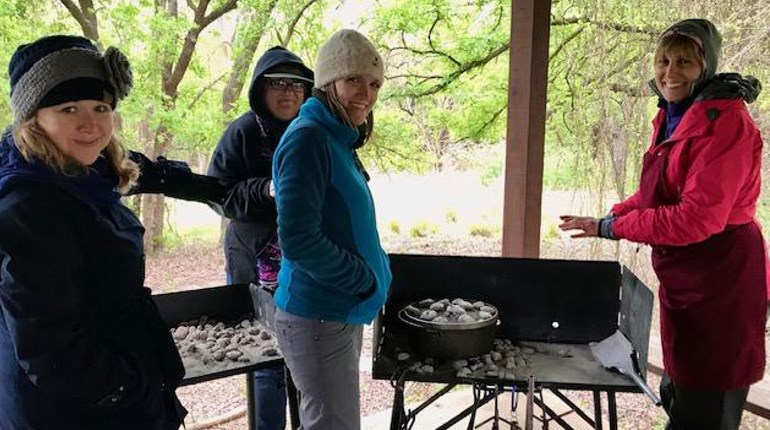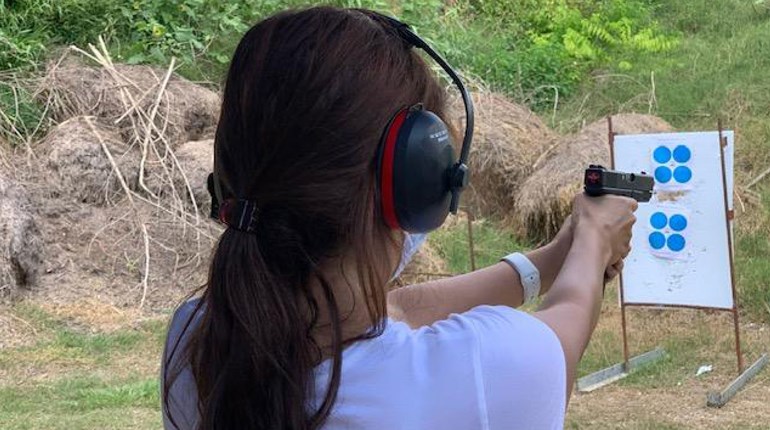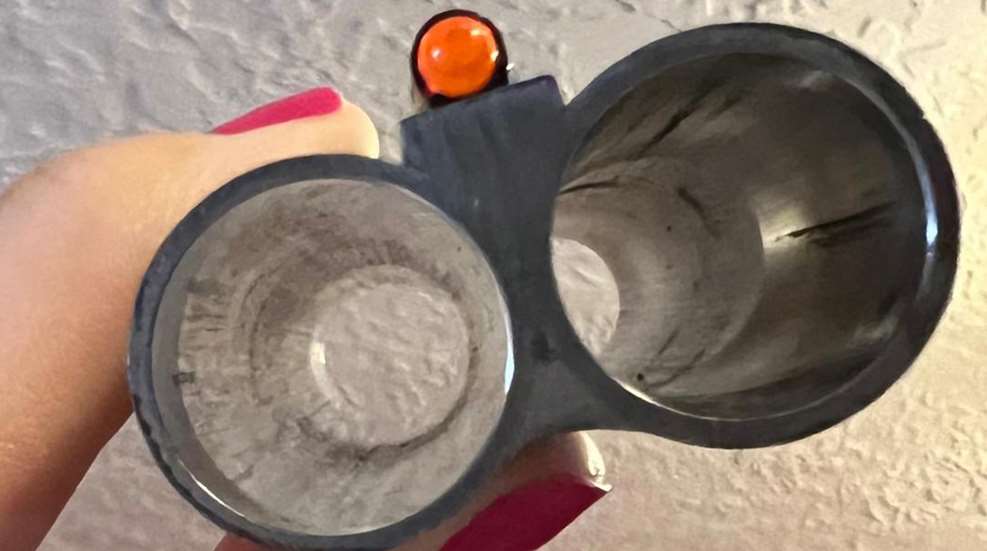
Training aids are very important in firearm training. The more training aids an instructor has, as long as they relate to the topic at hand, the better his or her class will be. Without training aids, all you have is a lecture or almost worse, a Power Point presentation—usually referred to as “Death by Power Point!”
Training aids breaks up the lecture, Power Point, slide show, or any other type of presentation. There are six things that using training aids do to assist in teaching: attract attention; arouse interest; provide clear explanations; give unity to an idea; allow for more learning in less time; and aid in retention. Understanding these concepts allows the instructor to successfully teach their students, especially when conducting an NRA Firearms Training course.
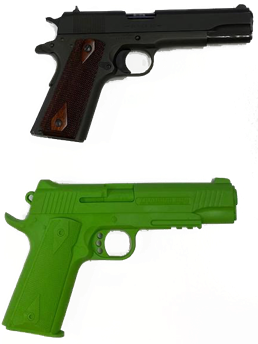
Attract Attention
A good instructor can read the room as he or she is teaching. Even the most interesting topic can become boring without the use of training aids. Proper training aids draw and hold the attention of your students. They give students a reference point to what you are talking about. Most people are visual learners and learn best seeing what you are talking about.
In every NRA Basic Firearms course, the instructors must cover the different action types of the firearms that are found in that discipline (rifle, pistol, shotgun). I cover all the firearm actions thoroughly with the NRA Power Point. I often notice that many of my students start to drift off as I go through the presentation. At that point, I break out the training firearms I use in class to demonstrate how to safely use and operate the different actions. It does not take long for the students to reenergize and instantly reengage, while watching intently. When the students have the chance to handle and operate the training guns, they really understand how they function.
Arouse Interest
Training aids can arouse interest in your students by giving reality to an abstract idea. This can spark an interest in the topic you are teaching. It can also aid in the understanding of the relationship of all the components of a firearm. It is the use of training aids that tie all concepts and components of firearms these together. If your students are not interested in the topic, they will not fully understand what you are discussing.
A good example of this is showing your class examples of firing pins. Center-fire firing pins are pointed, and rimfire firing pins are shaped like a flat spade. The students can see and feel how the center-fire firing pin punches the primer in a center-fire cartridge to ignite the primer. They can also see and feel how a rimfire pinches the rim of a rimfire cartridge against the frame or the cylinder to ignite the primer. Using firing pins, as an example, allow the student to see the relationship between the firing pins and the different types of cartridges.
Clear Explanations 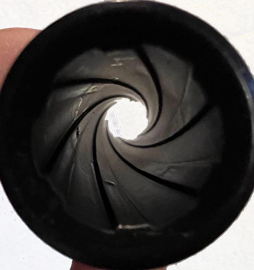
The best thing about the use of proper training aids is that it aids in the clear explanation of a topic. You can talk about something, describe something, or even explain how something works, but until you hand your student a training aid and let them manipulate it, they may never fully understand it. Many individuals need to see (and touch) what you are talking about, not just hear what you are talking about.
I experienced this firsthand when was teaching the NRA Basic Pistol Course. A woman in the class was a first-time gun owner. I was explaining the rifling in a handgun’s barrel, using the NRA Basic Pistol Power Point. As the slide showing the “lands” and “grooves” that make up the rifling was being displayed, I was describing what they were and what they did to a projectile.
The woman did not understand the concept. I then handed her two cut-off barrels. One was a piece of a shotgun barrel to show the “smooth bore,” and the other was a large and exaggerated example of a rifle barrel to show the “rifling” inside. She visually saw the rifling and felt the difference between the smooth bore and the rifled barrel. No amount of verbal descriptions or images could have made her understand what I was talking about. It was not until I broke out my training aids that she understood the concept of rifling.
Gives Unity to an Idea
Proper training aids give unity to an idea. The training aid ties everything together, making concepts easier to understand. For example, if you are explaining the firing sequence of a cartridge, without a training aid, it would be impossible to show your student in a classroom setting. The use of posters, dummy ammunition, or drawing the sequence out on a white board, are all examples of training aids that bridge unity between the case, primer, powder and bullet.
Training aids allow the instructor to compartmentalize each component of an item, such as a shotshell. Through various training aids, the instructor can show and explain each part of a shotshell—the hull, primer, gun powder, wad and pellets. By breaking down each component, all the parts are unified under the name: shotshell.
More Learning in Less Time 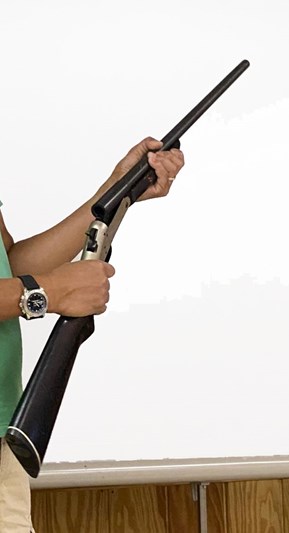
The use of training aids allows the instructor to use class time more efficiently. We have all heard the adage, “a picture is worth a thousand words.” As it relates to training aids, it is possible to conduct more learning in less time. It also allows the instructor to keep the class moving along without breaking up or interrupting the learning process.
When you are conducting an NRA Firearms course, you are required to discuss all the different types of firearm actions of the discipline teaching. If you are teaching a rifle class, you are required to cover bolt action, hinge action, semi-automatic action, lever action, etc. If you are teaching a handgun class you are required to cover single-action revolvers, double-action revolvers, single-action pistols, double/single-action pistols, striker-fire, etc.
Most of the new shooters are not familiar with different types of firearm actions. This is because we live in a world of striker-fired pistols and modern sporting arms. Many of my students have never held any guns outside of the striker-fired and AR-type guns. Having training firearms of different actions in class for the students to handle and manipulate is more optimal than trying to explain the actions from just a slide photograph or a poster. Training guns can cut the time in half that you spend explaining the different actions. Additionally, your students will have a better understanding of the actions and gain the experience of operating them even though they only may dry fired them in the classroom setting.
Aid in Retention
The NRA teaches that the retention rate is 65 percent for students attending firearms training courses. This means that you need to keep on target and get your message across efficiently. This is where the proper use of training aids comes in. Training aids can assist the instructor in helping their students retain more information.
Of our five senses—hearing, seeing, touching, tasting, and smelling—seeing is how we primarily learn. Therefore, instructors should demonstrate the behaviors they want their students to emulate, in front of their students. Instructors should never adopt the teaching philosophy, “Do as I say, not as I do.” If an instructor handles a firearm carelessly, the students will also handle the firearm carelessly. Make sure what you are actually “doing” what you are saying and demonstrating in front of your students. Students will duplicate what you do, not necessarily what you say.
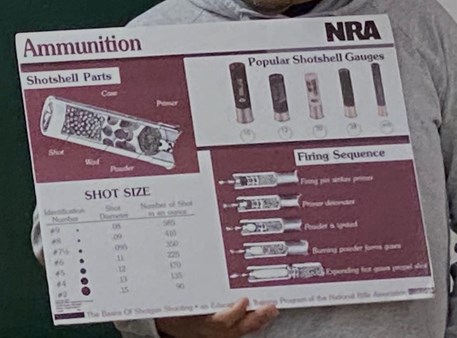
Students learn by seeing so any type of training aid the instructor uses in conjunction with their verbal instruction, helps the student aid in their retention of that material. The NRA Materials Department offers different training aid posters to instructors depending on their certifications. Instructors should also seek out additional hands-on training aids to help their students fully understand the topic. For example, the concept of a firearm’s chamber is hard to verbally describe. It is more than just “a hole the cartridge sits in” before it is discharged. Having a cut-away of a rifle’s chamber helps the instructor explain what a chamber is and helps the student fully understand the topic. This in turn aids in the student’s retention and makes for a much memorable and fun learning experience.












